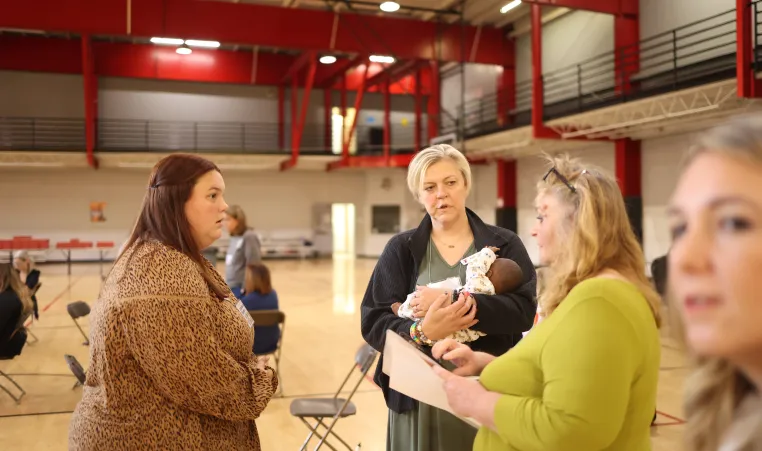
Imagine you are a single mother whose husband passed away, you’re working full-time but reliant on bus transportation to get around, and your mother who has diabetes is living with you and your three children in a rented apartment. You are tasked with keeping your home secure, buying food for your family, keeping the utilities on so that food is safe in the refrigerator and there’s heat or air conditioning, paying for clothing and diabetes medications, and keeping your children in school. For the 1.3 million North Carolinians living in poverty, this is much harder than it may seem.
Last month, more than 130 YMCA staff and community partners participated in poverty simulations held at the YMCA of Northwest NC and the Goldsboro Family YMCA that brought this reality to light for many of them. Presented by the Alliance and the North Carolina Community Action Association, and supported by WellCare of North Carolina and UnitedHealthcare Community & State, the poverty simulations highlighted the complexities and frustrations of living in poverty day to day –and provided staff with greater cultural competency in serving low-income people.
Participants, who experienced four 15-minute “weeks” during the simulations, vied for limited resources and faced multiple challenges: unexpected expenses at school, unanticipated car trouble or buses running late (which causes you to lose your job), unemployment benefits running out, and kids getting into trouble at school because they are hungry and unable to focus and behave. These are all very real challenges that people with low incomes in North Carolina face.
Participants who played the role of agencies and businesses provided a realistic experience, sometimes closing early unexpectedly or not opening at all on a given day, not having enough resources to serve everyone in need, and having policies that make it even harder for those with low income to overcome hurdles. These and many other challenges create a domino effect where one challenge or crisis leads to another.
Simulation participants filled out pre- and post-assessments; asked in the post-assessment whether perspective or opinion of people living in poverty changed because of the simulation. Many affirmed that it did, and shared these observations:
- “Being poor can be stressful on both the adults and the kids.”
- “Children have no say in what happens to them as a result of poverty.”
- “People living in poverty are constantly under a level of stress that, quite frankly, I don’t know if I could handle. My perspective and thought process towards those in poverty has shifted.”
- “It is hard to know what to do and where to turn for help.”
- “You hear about support services but don’t realize the loopholes and how much is involved with how little support you can actually get.”
- “I can see how different one week can be to the next. Not consistent and hard to plan for.” “I knew it was hard, but not this hard.”
- “It’s easy to underestimate the difficulty of living below the poverty line.”
- “It seems that when it rains, it pours.”
- “Lack of transportation is debilitating.”
- “It was hard to access and understand available resources. Being a child in the simulation was hard because I felt helpless and had to miss school to help my ‘grandfather’ get around.”
Others said it didn’t change their perspective; poverty is as bad as they thought or knew it to be, from their own experiences. “We need better services with less bureaucracy and more consideration for others,” one participated comment.
Resources for Those in Need
The poverty rate in our state is 12.8%, which is higher than for the United States at 11.5%. And in 2022, 388,000 children were among the 1.3 million in the state living below the poverty level, which is $15,000 for an individual or $30,000 for a family of four.
The mission of the NC Community Action Association’s network of 34 Community Action Associations aligns with the Y’s work around strengthening families and communities, and youth development. NCCAA notes that poverty is a systemic problem, and Community Action provides a systems approach to resolving these issues and promotes self-sufficiency and independence from public programs. Community Action Agencies’ three key assets are: flexibility, immediacy, and coordination. Learn more here see how your Y can partner with your local agency to provide support to those at your Y and in your community in need.